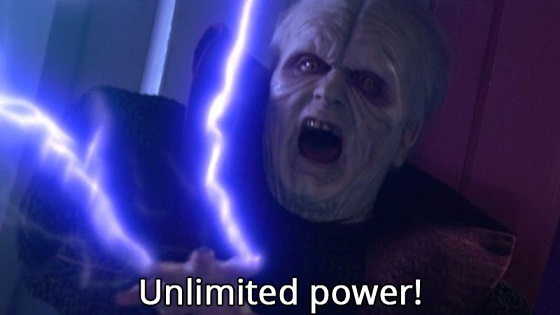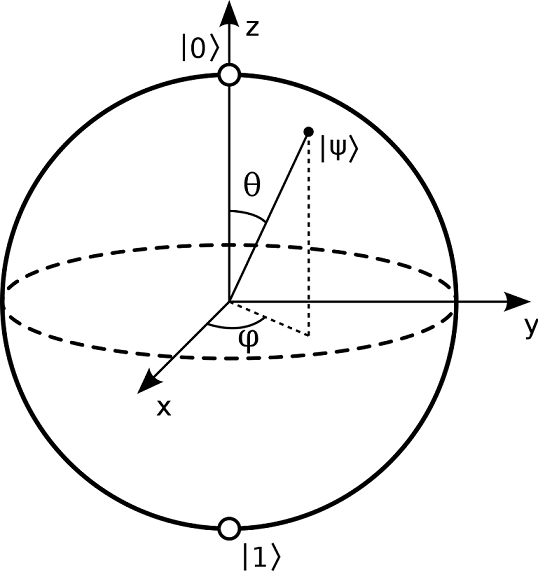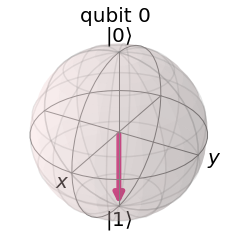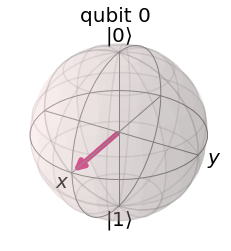Episode II: Statevectors & the Bloch Sphere
In this episode, we will introduce statevectors, Bloch spheres, and their representations in Qiskit. You will learn how to utilize different simulators in Qiskit and develop a better understanding of your qubit states.
Introduction to Statevectors
In seminar you have been introduced to the concept that any “closed” quantum system can be modeled as a vector. Statevectors are used to model the state of our quantum system.
In Episode I, we have demonstrated this when we intialized our qubit states.
As a reminder:
state = [0, 1] # This is a statevector for |1⟩
circuit.initialize(state, qubit0) # Initializes qubit0 to state |1⟩
In matrix form, this is what our statevector looks like:
TO-DO: Insert math w/ LaTeX
Statevectors will prove to be incredibly useful when we discuss multi-qubit representations. However, for now, we will focus on statevectors for single qubits.
Qiskit Simulators
Qiskit offers different simulators depending on what you’re working with, and how you want to simulate your circuits. In Episode I, you might have noticed that we utilized the “qasm” simulator like so:
backend = Aer.get_backend('qasm_simulator') # Loads the qasm simulator
Essentially, the “qasm” simulator is used to to emulate a real quantum computing.
Now, you might be scratching your head and wondering: isn’t that the point of this whole thing? Well, this depends on how you want to simulate. On a real quantum computer, if you want to observe the states of your qubits during the execution of your program, you would end up destroying them.
Luckily, we can cheat a bit and avoid this. Qiskit offers the statevector simulator, which allows us to look at our qubit states before we measure. This will ease the development of quantum algorithms as the tool is quite powerful.

You can also think of it as a VIP pass to our qubits:
backend = Aer.get_backend('statevector_simulator') # Loads the statevector simulator
As we move on, we will use the statevector simulator for representing our statevectors.
Using the Statevector Simulator
Let’s start by defining a function for our statevector simulations:
def statevec(circuit):
backend = Aer.get_backend('statevector_simulator') # Loads the statevector simulator
data = execute(circuit, backend).result().get_statevector() # retrives results and statevector from simulation
print("Statevector: ", data) # Present data
# * Note *, you can also use the "return plot_histogram(data)" to represent the data with a histogram rather than the print statement
Now, let’s create a basic circuit with one qubit, and one classical bit:
qubit0 = QuantumRegister(1, name = "qubit0")
classic_bit0 = ClassicalRegister(1, name = "classic_bit0")
circuit = QuantumCircuit(qubit0, classic_bit0)
state = [0, 1] # This is a statevector for |1⟩
circuit.initialize(state, qubit0) # Initializes qubit0 to state |1⟩
Our next step is to simulate:
statevec(circuit)
When you run the code, your output will look like this:
Statevector: [0.+0.j 1.+0.j]
Notice how it looks very similar to our state variable in our code, except with a few minor differences. What we see are two complex numbers, where the “j” is the python representation for the imaginary number i.
What if we put the qubit into a superposition? Let’s give this a try:
def statevec(circuit):
backend = Aer.get_backend('statevector_simulator') # Loads the qasm simulator
data = execute(circuit, backend).result().get_statevector()
print("Statevector: ", data) # Present data
qubit0 = QuantumRegister(1, name = "qubit0")
classic_bit0 = ClassicalRegister(1, name = "classic_bit0")
circuit = QuantumCircuit(qubit0, classic_bit0)
state = [math.sqrt(1/2), math.sqrt(1/2)]
circuit.initialize(state, qubit0) # Initializes qubit0 to state |1⟩
statevec(circuit)
You should find that the output will look similar to this:
Statevector: [0.70710678+0.j 0.70710678+0.j]
Try experimenting with the statevector simulation. Can you make a statevector that has a 1/8 probability of measuring the state |1⟩?
The Bloch Sphere
The Bloch sphere is used to geometrically represent a state space of a qubit.
This is what it looks like:

The North and South poles of the sphere represent the states |0⟩ and |1⟩, respectively. Essentially, a qubit state can be represented by any point on the sphere, whereas classical bits can only be represented by the North and South poles.
Bloch spheres are straightforward to use in Qiskit. The following function takes a circuit (assuming with one qubit) and spits out a Bloch sphere representation of the qubits state:
def plot_bloch(circuit):
backend = Aer.get_backend('statevector_simulator')
job = execute(circuit,backend).result().get_statevector()
return plot_bloch_multivector(job)
We can actually use our previous circuit that we used for the statevector simulations.
state = [0, 1]
circuit.initialize(state, qubit0) # Initializes qubit0 to state |1⟩
plot_bloch(circuit)
When you run the code, you should see this:

Because we initialized our qubit state to |1⟩, our qubit is “spin down” and pointing to |1⟩. At this point, you could probably guess what the Bloch sphere would look like if we initialized the qubit state to |0⟩.
Okay, so we can represent qubits as a |0⟩ or |1⟩ on the Bloch sphere, so what? Remember that qubits can be placed in a superposition of states, that is, they can be both |0⟩ and |1⟩ at the same time!
What in the world would this look like? Let’s check it out:
def plot_bloch(circuit):
backend = Aer.get_backend('statevector_simulator')
job = execute(circuit,backend).result().get_statevector()
return plot_bloch_multivector(job)
qubit0 = QuantumRegister(1, name = "qubit0")
classic_bit0 = ClassicalRegister(1, name = "classic_bit0")
circuit = QuantumCircuit(qubit0, classic_bit0)
state = [math.sqrt(1/2), math.sqrt(1/2)]
circuit.initialize(state, qubit0) # Initializes qubit0 to a superposition
plot_bloch(circuit)
Now you’ll see this:

What happened? We changed basis.
Qiskit initially starts in the Z-basis, but when we initialized our qubit into a superposition, we switched over to the X-basis. When developing your circuits, you have to be extra careful with your measurements–Qiskit only allows measuring in the Z-basis.
Conclusion
As we travel further along our journey, we will discuss changing bases and expand our toolkit to inch closer towards developing some interesting quantum algorithms.
For now, let us head over to Episode III!
Return to the Homepage!